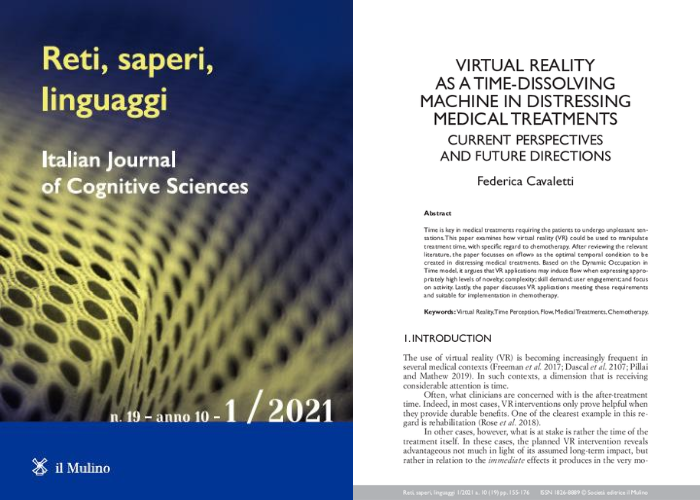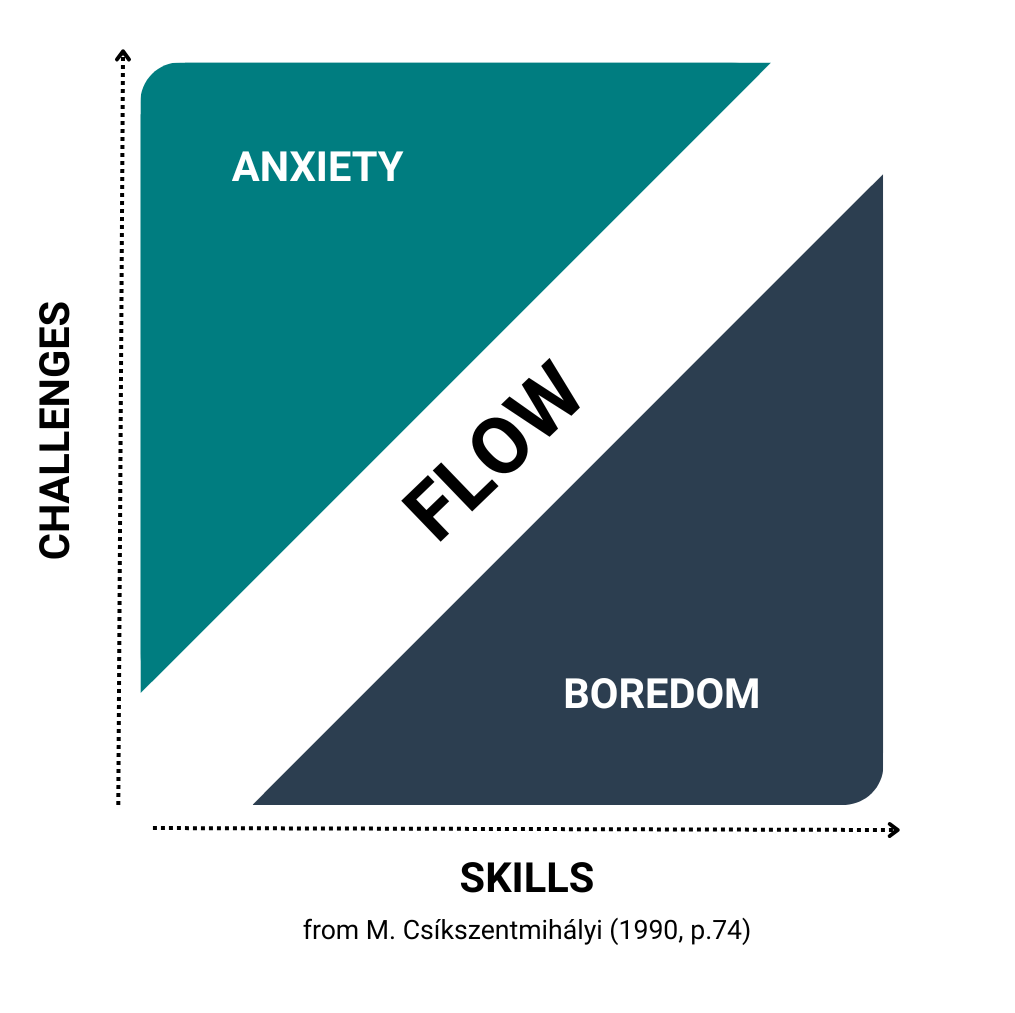
Come è nato il progetto TIMELAPSE?
Tutto è iniziato con un articolo scientifico scritto nel 2021 da Federica Cavaletti, ricercatrice post-doc dell’Università degli Studi di Milano, che ha dato avvio a un dialogo con operatori del settore (Khora e Fondazione San Gerardo dei Tintori) e ha aperto la strada alla presentazione della proposta progettuale nell’ambito della call ERC-2023-Proof of Concept.
L’articolo riportato di seguito, redatto nell’ambito del progetto di ricerca ERC Advanced Grant “AN-ICON”, affronta il concetto chiave di flow così come teorizzato da M. Csíkszentmihályi (1975, 1990), sostenendo che la Realtà Virtuale potrebbe essere uno strumento ottimale per indurlo al fine di manipolare la percezione del tempo durante trattamenti medici lunghi e faticosi, come la chemioterapia.

Si è sostenuto, in termini generali, che la Realtà Virtuale sia in grado di migliorare l’esperienza del trattamento chemioterapico influenzando la percezione soggettiva del tempo dei pazienti. Ma potrebbe, in modo più radicale, porsi l’obbiettivo di comprimere il tempo, per rendere il tempo del trattamento come soggettivamente più breve, e dunque più sopportabile?
Titolo
F. Cavaletti: “Virtual Reality as A Time-Dissolving Machine in Distressing Medical Treatments. Current Perspectives and Future Directions” (2021)
Abstract
Time is key in medical treatments requiring the patients to undergo unpleasant sensations. This paper examines how virtual reality (VR) could be used to manipulate treatment time, with specific regard to chemotherapy. After reviewing the relevant literature, the paper focusses on «flow» as the optimal temporal condition to be created in distressing medical treatments. Based on the Dynamic Occupation in Time model, it argues that VR applications may induce flow when expressing appropriately high levels of novelty; complexity; skill demand; user engagement; and focus on activity. Lastly, the paper discusses VR applications meeting these requirements and suitable for implementation in chemotherapy.
Keywords
Chemotherapy, Virtual Reality, Time Perception, Flow, Medical Treatments
Come citare l’articolo
Cavaletti, F. (2021). Virtual Reality as A Time-Dissolving Machine in Distressing Medical Treatments. Current Perspectives and Future Directions. Reti, saperi, linguaggi, 8(1), 155-176.
